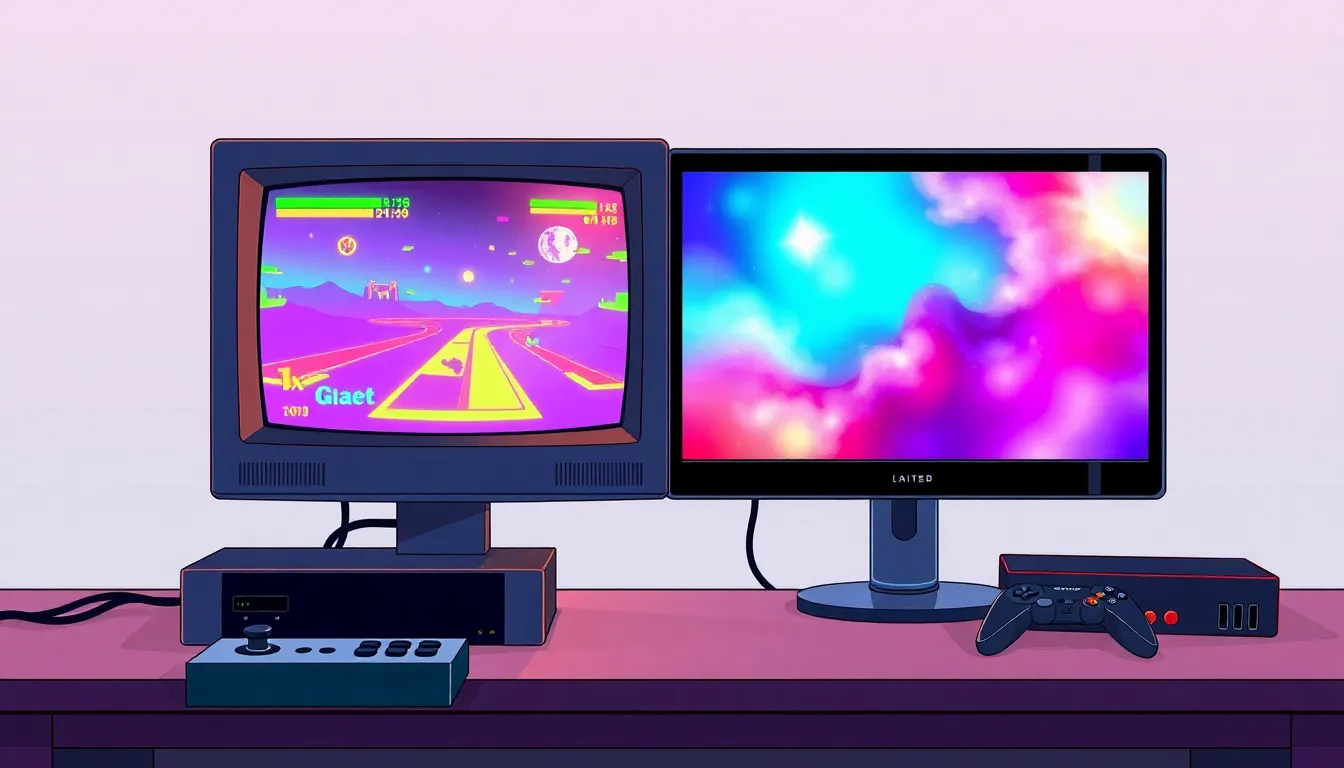
In the epic showdown of retro gaming, two titans battle for supremacy: CRT and LCD. Picture this: the warm glow of a CRT screen, where pixelated heroes come to life in all their 8-bit glory. Or imagine the sleek, modern lines of an LCD, promising crystal-clear visuals and vibrant colors. Which one truly reigns supreme in the world of nostalgia?
CRT Vs LCD Retro Gaming
CRT and LCD technology each bring unique experiences to retro gaming. CRT displays have a classic allure, while LCD screens offer modern clarity and convenience.Overview of CRT Technology
CRT technology relies on electron beams illuminating phosphor-coated screens. This process creates vivid colors and deep blacks, contributing to an immersive gaming experience. CRTs excel in displaying classic 240p and 480i resolutions, aligning perfectly with the output of vintage consoles like the NES and Sega Genesis. Many enthusiasts appreciate the natural motion blur CRTs provide, enhancing arcade-inspired gameplay. Furthermore, these displays feature low input lag, crucial for fast-paced gaming. Their curved screens help present a more three-dimensional image, deepening the nostalgia for gamers seeking authenticity.Overview of LCD Technology
LCD technology uses liquid crystals to create images, resulting in thinner, lighter displays. Sharpness and vibrant colors characterize LCD screens, appealing to a generation accustomed to high-definition visuals. Modern LCD monitors support various resolutions, making them adaptable to various gaming setups. Features like low latency enhance gaming responsiveness, satisfying competitive players. Additionally, many LCDs include built-in features such as scalability, allowing users to connect multiple devices easily. Some models even offer retro settings to mimic CRT visuals, bridging the gap between old and new technologies.Visual Quality Comparison



